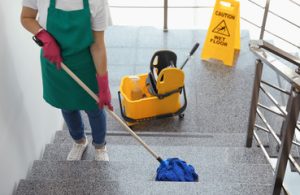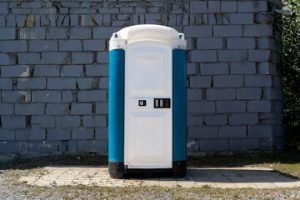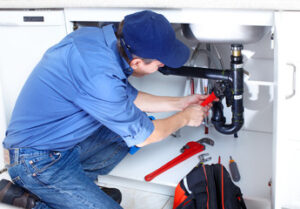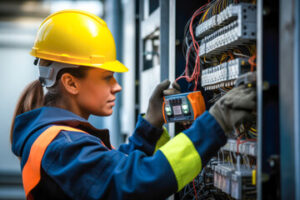House Deep Cleaning Services is not just about surface shine. It’s a reset for health, comfort, and peace of mind. Modern homes are more complex than before. So cleaning now demands a smarter and more detailed approach.

Airborne particles gather in overlooked zones. Deep cleaning targets hidden allergens and pollutants. It boosts indoor air quality significantly. This is vital for children and sensitive individuals.
Robotic mapping tools are being used for precision. They help identify grime hotspots not visible to the eye. These tech-guided routines save time and effort. They improve accuracy in hard-to-reach corners.
Non-toxic agents are becoming the new standard. People want cleaning that doesn’t compromise their health. Biodegradable solutions remove grime without harmful residue. It aligns with both safety and sustainability goals.
Post-renovation deep cleaning has unique demands. Fine dust settles inside vents and behind cabinets. Specialized tools are used to extract the debris. It restores freshness after messy construction work.
Aromatherapeutic cleaning is also rising in popularity. Essential oil blends are infused into the process. These scents promote relaxation while disinfecting surfaces. Cleaning becomes both a chore and a wellness ritual.
High-touch areas are now considered priority zones. Door handles, remotes, and switches harbor bacteria. These are disinfected with medical-grade formulas. This helps reduce the risk of illness at home.
Professional services now offer allergen testing. They assess dust mites, pet dander, and mold spores. Cleaning strategies are adjusted based on results. It ensures a more personalized hygiene plan.
Seasonal deep cleaning is trending again. Spring and fall bring new challenges and allergens. These sessions target weather-specific buildup. It prepares the house for changing indoor activities.
Technology integration adds new depth to cleaning. Apps allow homeowners to track services and set schedules. Photos and reports are uploaded after each visit. This brings more transparency to every session.
Electrostatic disinfection is used in detailed sanitation. The mist clings to surfaces evenly and effectively. It covers items that are easily missed by hand. This is especially useful for upholstery and curtains.
Deep cleaning now includes digital device sanitation. Tablets and keyboards collect oils and germs daily. Antibacterial wipes and UV sanitizers are used. This ensures clean tech in a modern living space.
Some services offer pet-specific deep cleaning. They focus on fur buildup, odors, and stains. Pet-safe products are always used in these areas. It creates a fresher environment for both pets and humans.
Eco-conscious clients request greywater usage audits. They want to ensure water isn’t wasted during cleaning. Smart equipment tracks and recycles where possible. It brings conservation and cleanliness together.
Custom care for materials is increasingly common. Stone, glass, and wood all need different treatments. Technicians are trained to avoid surface damage. This protects furniture and flooring investments.
Steam vapor cleaning is being used more often. It eliminates bacteria without chemicals. The high temperature penetrates deep into fabrics. This is especially effective on mattresses and rugs.
Mold detection and prevention is part of deep cleaning. Humid areas are monitored with sensors and inspections. Treatments are applied if spores are found. This stops long-term damage and respiratory issues.
Time-sensitive deep cleaning is gaining traction. Clients book based on events or family gatherings. Crews work quickly but meticulously. They transform homes in just a few hours.
Digital scent diffusers are now part of final touches. After cleaning, subtle fragrances are released room by room. Clients can choose their preferred scent profiles. It enhances the fresh and clean experience.
Deep cleaning includes ceiling and wall sanitation. Dust clings to vertical surfaces over time. Special extendable tools are used safely. These remove spider webs, stains, and odors.
Stain-mapping tools are now used in fabric cleaning. Cameras highlight spots invisible under normal light. Solutions are applied with precision. It improves effectiveness and avoids overwetting.
Cleaning services now track indoor air changes. Particle counters detect air quality before and after cleaning. Reports are given to show impact. Clients see tangible results from their investment.
Childproof cleaning is part of new packages. Homes with toddlers require extra caution. Products used are tested for skin and respiratory safety. Toys and furniture are cleaned with delicate methods.
Some services now offer deep cleaning subscriptions. This ensures regular scheduling without reminders. Automated billing and priority bookings are included. It suits busy households with minimal time to plan.
Task zoning is another innovation in workflow. Teams split the house by purpose-based areas. Each area receives task-specific products and tools. This improves focus and overall results.
Ultrasonic tools are used in cleaning vents. These break up years of dust using vibration. Air ducts become cleaner and more efficient. Breathing quality improves immediately afterward.
Curtain and blind deep cleaning is also evolving. Instead of taking them down, machines are used on-site. Steam and vacuum devices clean without damage. It avoids the hassle of reinstallation.
Indoor plant care is sometimes included in packages. Dust buildup on leaves affects growth. Cleaners now gently wipe or mist plant foliage. It boosts plant health and visual appeal.
Minimal-disruption deep cleaning is also offered. Teams operate around work-from-home schedules. Quiet tools and planned movement reduce disturbance. Homeowners continue tasks while cleaning happens in zones.
Smart home devices are carefully wiped during sessions. Touch panels, voice assistants, and smart locks need care. Cleaning without interference preserves their sensitivity. It also maintains device hygiene.
Microfiber analysis has improved cloth usage. Certain cloths are tested for best surface compatibility. This avoids streaks and enhances cleaning results. Materials are chosen based on each surface.
Deep cleaning for memory foam furniture is now available. Steam and light vacuuming are used to protect integrity. Stains are extracted without damaging the form. This adds years to the lifespan of furniture.
Some services use blacklight inspection after cleaning. The light shows any missed biological stains. Re-cleaning is done based on results. It ensures the space is as clean as promised.
Oven and range deep cleaning now uses less caustic agents. Foam and steam remove grease without harsh chemicals. Food-safe finishes are always maintained. It’s both safe and effective for kitchens.
Refrigerator interiors get non-abrasive treatments. These remove food odors without scratching shelves. Natural deodorizers are added discreetly. The appliance feels brand new after service.
Shoe rack sanitation is being included in hallway zones. Germs travel indoors via soles. UV treatment and odor removal help maintain cleanliness. It’s a simple yet powerful upgrade to routines.
Minimalist homes benefit from zone deep-cleaning. Even sparse spaces collect dust and dander. Focus is given to baseboards, corners, and air filters. The minimalist aesthetic stays clean and crisp.
Deep cleaning now tackles ceiling fans and lighting fixtures. These are dust magnets and often ignored. Crews use ladder-safe practices and delicate brushes. Visibility and air movement improve afterward.
Cleaning with child supervision is an added service. A dedicated staff watches over toddlers during sessions. Parents can relax while rooms are cleaned. Safety and convenience are offered in one package.
Home gyms get targeted disinfecting routines. Equipment handles, mats, and floors are deep-cleaned. Bacteria and sweat residues are eliminated. The space feels energizing and sanitary.
Hidden storage areas are inspected and sanitized. Closets, underbeds, and attic spaces often store dirt. Detailed cleaning includes vacuuming and deodorizing. It clears both dust and forgotten clutter.
Mirror-polishing techniques are now streak-free. Special formulas leave no fog or residue. The reflection becomes brighter and more accurate. Bathrooms feel elevated with just this small touch.
Deep cleaning packages now address home office zones. Keyboards, desk drawers, and cords collect debris. Sanitization is paired with reorganization. It boosts focus and mental clarity for remote workers.
Entryways and mudrooms are given extra attention. These spaces transition outdoor dirt into the home. Floor mats are deep-cleaned or replaced. It minimizes further spread into interior zones.
Weekly check-ins are now part of premium subscriptions. Staff monitor problem areas that may need attention. These include leaks, pests, or material wear. Homeowners are informed before small issues grow.
Window screen deep cleaning is often overlooked. Mesh collects dust, pollen, and insects. Soft brushes and gentle rinses restore airflow. It also improves the outside view.
Some services offer eco-audit reports post-cleaning. They suggest how to reduce waste and energy use. Clients are educated alongside the cleaning experience. It’s a lifestyle change, not just a service.
Mopping patterns now use grid methods. This ensures no spot is missed or double-cleaned. It saves time and resources without reducing quality. Every square foot is accounted for.
Color-coded cloth systems are strictly followed. Blue for glass, red for restroom surfaces, yellow for counters. This avoids cross-contamination between rooms. It reflects a scientific approach to hygiene.
New services include bedtime reset routines. Cleaners arrange linens, fluff pillows, and mist rooms. The result is a cozy, hotel-like feel. Clients enjoy comfort alongside sanitation.
House deep cleaning is no longer just labor. It is a blend of science, care, and customization. Innovations continue to enhance what used to be routine. Homes now shine, breathe, and heal all at once.


